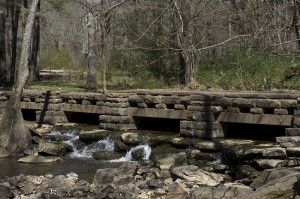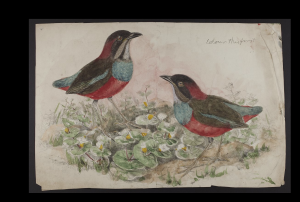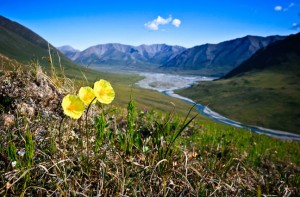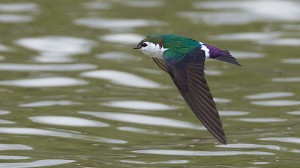MEDIA ALERT
FOR IMMEDIATE RELEASE: June 17, 2014
FOR MORE INFORMATION CONTACT:
Beverly M. Payton, Communications Director
(w) 610-268-2153 x 305 (m) 215-512-7739
[email protected]
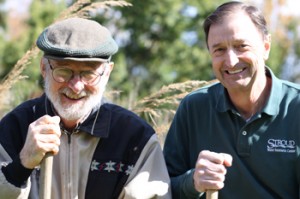
Research Scientist Emeritus Denis Newbold, Ph.D. (left) and Director and Senior Research Scientist, Bern Sweeney, Ph.D.; Photo by Kay Nixon
Study: 100-Foot Wide Forest Keeps Streams Healthy
Stroud Water Research Center scientists found that a wide forest bordering a stream protects water quality and maintains the natural structure and habitat of important stream communities.
AVONDALE, Pa. – Streamside forest buffers, long considered a best management practice, should be at least 100 feet wide on each side to adequately protect freshwater ecosystems from human activities according to an extensive scientific literature review published in the June issue of Journal of American Water Resources Association.
“That’s a lot. We know it’s a lot. But this is what the science is saying, and the reward for a wide forest buffer is huge,” said study author Bernard W. Sweeney, Ph.D., director of the Stroud Water Research Center.
While the environmental benefits of streamside forest buffers have been known for decades, there was no consensus about how wide an effective forest buffer should be, until now.
The ecosystem benefits of wider forest buffers for streams include nitrogen pollution removal, soil sediment trapping, bank erosion prevention, improved temperature control, increased quantity of large woody debris, stream channel widening, improved channel meandering, and healthier habitat for macroinvertebrates and fish. Meadows and grass buffers do not provide as many benefits.
“Most pollutants enter river systems in small streams, narrow enough to jump across. So it’s vitally important that we protect their function,” said study co-author J. Denis Newbold, Ph.D., a specialist in ecosystem processes at Stroud Water Research Center. Newbold explained that since small freshwater systems constitute 85 percent or more of the total stream miles in the world, they are more commonly in direct contact with human sources of pollution than are larger freshwater streams, such as large creeks and rivers.
The U.S. Environmental Protection Agency reported, in 2013 that more than half of the river and stream miles in the United States are in poor condition and no longer able to support natural aquatic life or designated use by humans.
Sweeney and Newbold concluded that their review underscores the important role streamside forests play in protecting and enhancing water quality of downstream rivers and estuaries by providing important services, such as: sequestering carbon, metabolizing organic matter and degrading and processing pollutants.
Current standards for a minimum forest buffer width vary from state to state and even from program to program, generally ranging from 35 feet to 100 feet.
Replanting forests in previously cleared land is a key component of Stroud Water Research Center’s Watershed Restoration Team which helps farmers and landowner’s access state and federal incentives that offset the costs of making improvements and keeping the land in its natural state.
Matt Ehrhart, director of watershed restoration at Stroud Water Research Center, said: “While not every farmer and landowner we work with will be able to accommodate a 100-foot wide forest buffer, citing this study enables us convey the importance of forest buffers and perhaps persuade landowners to establish wider forest buffers than they might previously have considered.”


